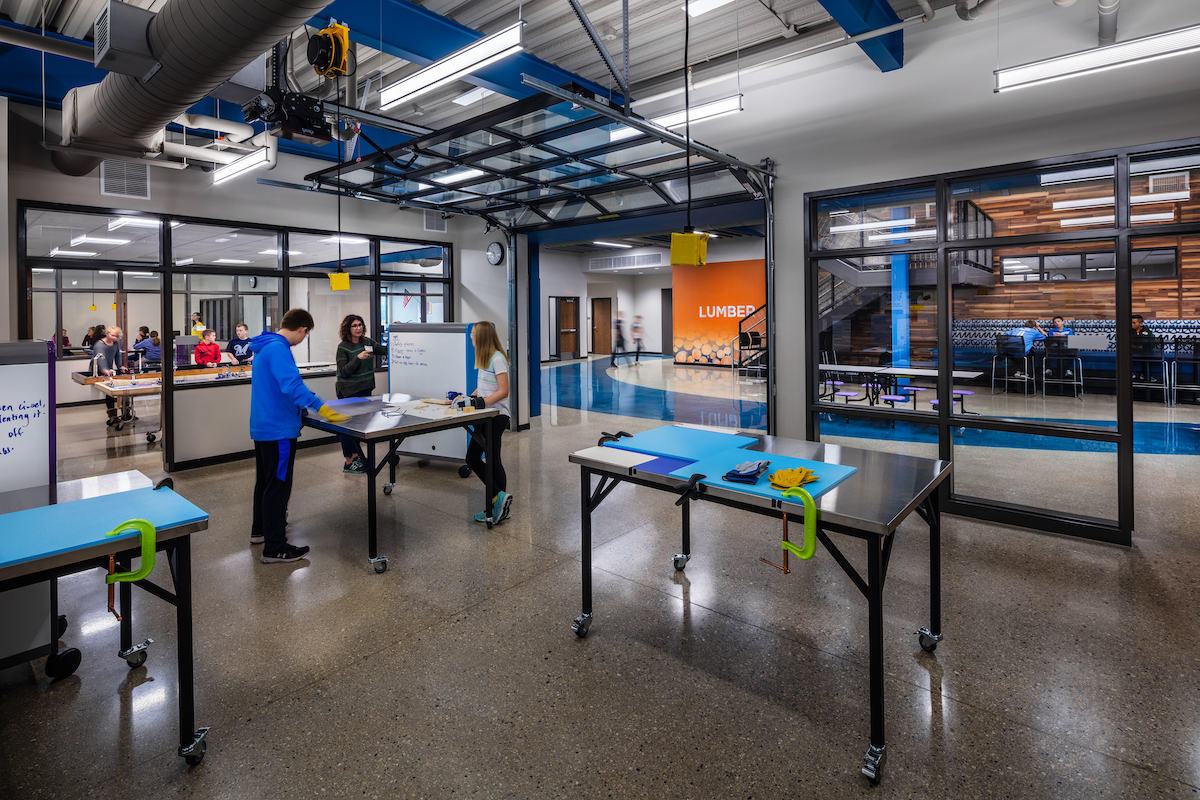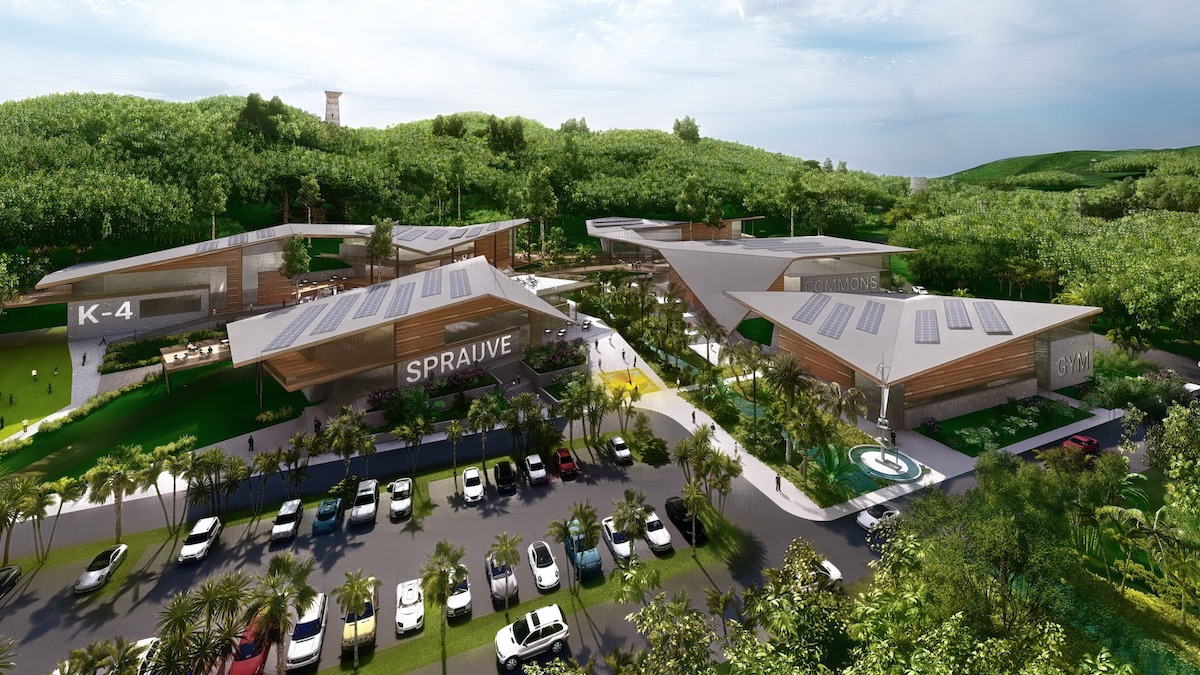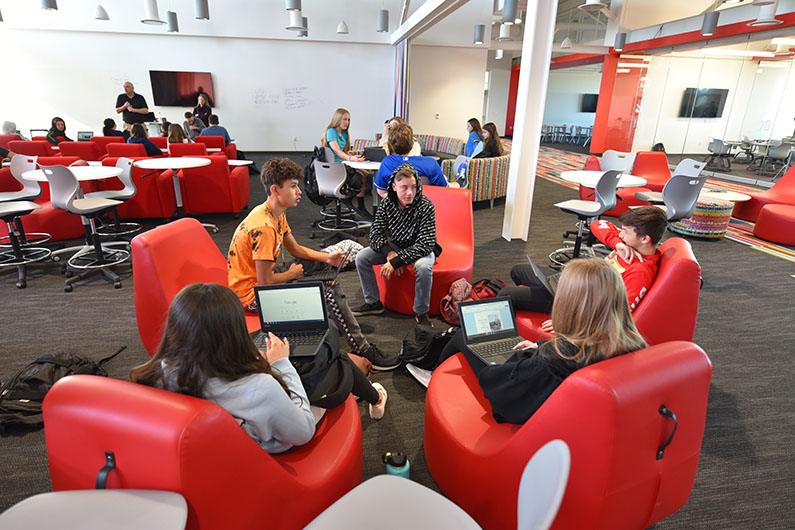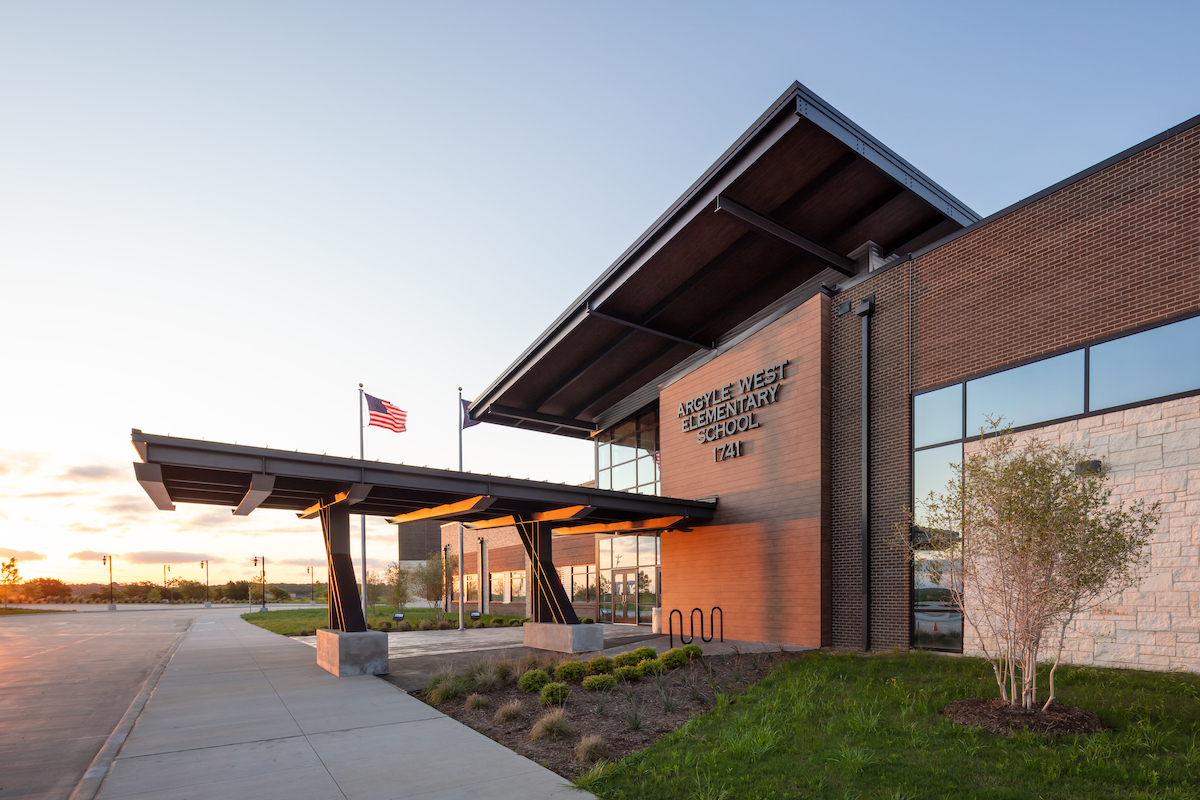K-12 schools in Mississippi began reopening in late July. By August 13, 39 counties—half of that state’s total—had schools reporting positive coronavirus cases that included 109 teachers and 69 students. More than 250 teachers and staff and 489 students were quarantined. On August 17, Gov. Tate Reeves announced COVID-19 testing for all teachers and emergency telehealth coverage for schools.
Also being tested, in Mississippi and elsewhere across the nation, are the decisions that school districts made about social distancing, sanitization, and online learning to present environments where students and teachers can feel safe.
“Right now, we’re holding our breath, to some degree,” says Dan Davis, Senior Vice President with CG Schmidt, the Milwaukee, Wis.-based construction company. “This pandemic really showed us how ill-prepared we were to face this kind of situation. Unfortunately, we don’t think anyone can really say with confidence that they have a good picture of the long-term effects of the pandemic on the market.”

The $30.9 million Sheboygan Falls (Wis.) Middle School replaced a building that was more than a century old. Its design, by EUA Architects, focuses on the concept of a “Learning River” that winds its way through the school, and leads to each of the grade “villages” representing the area’s identifying elements: falls, river, mills, and lumber. CG Schmidt was the contractor. Photo courtesy EUA
The K-12 sector has been somewhat less affected by the virus in terms of project delays or postponements, say AEC sources. What’s different, however, is “that everything is constantly changing,” says Steve Hulsey, President of Corgan. “The urgency of the pandemic highlighted the need for schools to consider gaps in agility, and opportunities to improve response procedures.”
Hulsey, echoing other AEC execs, adds that COVID-19 “has reinforced the fundamental need for human interaction, collaboration, and the learning that happens through in-person experiences and groups.” Jim French, FAIA, Senior Principal and Global K-12 Education Practice Leader for DLR Group, believes the pandemic can be a “catalyst for positive change” that leads to showing that “learning can happen anywhere.”
Altering K-12 school construction plans
There were some immediate changes that schools made in order to reopen for the fall semester. These included HVAC upgrades, installing indirect UV lighting, and modifying classrooms, says Susan Tully, LEED AP BD+C, Senior Project Manager at Gilbane Building Company. Learning spaces are flexible and adaptable. Some schools also focused on expanding their health and wellness suites.
“Our clients’ priorities are changing,” says Gil Fullen, Vice President of Business Development for Balfour Beatty’s California buildings team. School districts there are deferring projects like sports fields and asking instead for new infrastructure and modernization that support distance learning.

DLR Group recently completed an education facilities master plan for the U.S. Virgin Islands’ Department of Education, which oversees 10,000 students. The master plan called for the reduction of facilities to 18 from 32. Six schools will be constructed and 12 renovated or expanded by 2025. Shown is the Julius Sprauve school on St. John. Rendering: DLR Group
Huckabee, which specializes in education design, this summer was in the middle of bond planning for two high schools in the Wichita Falls, Texas, Independent School District. “The community has been very forward thinking in their design response, as they build on an existing platform of distance learning,” says Konrad Judd, AIA, LEED AP, RID, the firm’s Chief Design Officer. He elaborates that a hybrid model of instruction will require fewer classrooms and more common and collaborative spaces, with an emphasis on adaptability. “The design is less about a direct response to COVID-19 and more about a solution that supports long-term instructional and safety needs,” says Judd.
Corgan’s Hulsey adds that K-12 security concerns are now more “layered” and consider threats such as infectious diseases.
Involving the community in K-12 school design
AEC sources agree that technology in the form of enhanced IT and mechanical systems is now central to any school improvement or new construction. “Features that are ‘luxury’ now—like touchless faucets and toilet systems—will become a minimum standard for school facilities,” says Jake Nabholz, President of contractor Nabholz.
Fullen of Balfour Beatty says his firm has been using virtual and augmented reality and BIM tools to keep its K-12 jobsites safe and to share information with clients. Corgan’s Hulsey sees VR and AR technologies opening shared learning vistas for students and teachers.
‘This pandemic really showed us how ill-prepared we were to face this kind of situation.’
— Dan Davis, CG Schmidt
With the pandemic still lurking, the longer-term design and construction objectives of some K-12 school districts are shifting toward their facilities serving the greater community, say AEC sources. “The actual school facilities are now, more than previously, understood to be a place of shelter, service, and a public resource,” says Gilbane’s Tully.
DLR Group’s Principal Todd Ferking blogged recently about a “community-based learning model” that allows students to take greater advantage of public spaces, like libraries and fitness centers, as a means toward reducing the buildings inventory that school districts have to operate and maintain.
Integrating schools with their communities is a smart tactic when getting voters to approve funding for school construction and renovation has gotten harder. “If the economy worsens, voters may reject significant bond referendums that they would traditionally support,” cautions DLR Group’s French.
GC Schmidt’s Davis predicts that school boards will be hesitant to pursue mega referendums during the recession. “We aren’t going to see a lot of $100 million new high schools or athletic or performing arts centers until we have a better understanding as to the endgame for the virus.” Over the next 12 to 18 months, Davis believes that schools are more likely to take a “two-stage” approach that focuses first on disease control within their existing operating and maintenance budgets, and second on using new funding to upgrade HVAC and MEP systems. He adds that more districts are availing themselves of federal grants to purchase advanced technologies like modular ionization bars.
Huckabee’s Chief Operations Officer Tom Lueck projects a 25-30% drop in the education market this year. He says that many Texas school districts delayed their bonds by six to 12 months or more. “Without bond elections, school districts don’t have the capital for major construction projects.” Consequently, Huckabee’s focus, until there’s an economic rebound, “is helping clients realize their potential in existing spaces,” he says.
ALSO SEE: The rise of inquiry-based learning in K-12 communities

Inquiry-based education offers a methodology that does not rely solely on the educator being the lead in all learning, writes DLR Group's Emily Froese. Read the article.
Ken Hutchens, VLK Architects’ Principal and Chief Creative Officer, corroborates Lueck’s comments about bond election postponements in Texas. He also notes that many school districts accelerated projects to take advantage of lower construction costs. “Therefore, architecture firms are burning through backlogged work, with minimal work in the pipeline for 2021.”
Still, Hutchens is cautiously optimistic about VLK’s K-12 prospects, even while anticipating that bond referendums are likely to be more conservative. He notes that in some urban areas in Texas, single-family homebuilding is “brisk,” which ultimately could create the need for new school facilities.
Gilbane’s Tully observes, parenthetically, that more school districts are looking for alternate funding, such as public-private partnerships. And Nabholz has seen some districts favor energy performance contracts that potentially generate operational savings.
Nabholz notes, however, that the coronavirus, scarcer financing, and a recession aren’t the only factors holding back K-12 school construction and renovation. The U.S. birth rate increased by 0.09% in 2019, after falling four consecutive years to its lowest level in more than three decades. “Class sizes have peaked and are trending downward,” Nabholz observes. “This, more than the pandemic, will affect the future of K-12 education building.”
Related Stories
| Aug 11, 2010
Bronze Award: Garfield High School, Seattle, Wash.
Renovations to Seattle's historic Garfield High School focused mainly on restoring the 85-year-old building's faded beauty and creating a more usable and modern interior. The 243,000-sf school (whose alumni include the impresario Quincy Jones) was so functionally inadequate that officials briefly considered razing it.
| Aug 11, 2010
Managing the K-12 Portfolio
In 1995, the city of New Haven, Conn., launched a program to build five new schools and renovate and upgrade seven others. At the time, city officials could not have envisioned their program morphing into a 17-year, 44-school, $1.5 billion project to completely overhaul its entire portfolio of K-12 facilities for nearly 23,000 students.
| Aug 11, 2010
Financial Wizardry Builds a Community
At 69 square miles, Vineland is New Jersey's largest city, at least in geographic area, and it has a rich history. It was established in 1861 as a planned community (well before there were such things) by the utopian Charles Landis. It was in Vineland that Dr. Thomas Welch found a way to preserve grape juice without fermenting it, creating a wine substitute for church use (the town was dry).
| Aug 11, 2010
School Project Offers Lessons in Construction Realities
Imagine this scenario: You're planning a $32.9 million project involving 112,000 sf of new construction and renovation work, and your job site is an active 32-acre junior-K-to-12 school campus bordered by well-heeled neighbors who are extremely concerned about construction noise and traffic. Add to that the fact that within 30 days of groundbreaking, the general contractor gets canned.
| Aug 11, 2010
High Tech High International used to be a military facility
High Tech High International, reconstructed inside a 1952 Navy metal foundry training facility, incorporates the very latest in teaching technology with a centerpiece classroom known as the UN Theater, which is modeled after the UN chambers in New York. The interior space, which looks more like a hip advertising studio than a public high school, provides informal, flexible seating areas, abunda...
| Aug 11, 2010
High-Performance Modular Classrooms Hit the Market
Over a five-day stretch last December, students at the Carroll School in Lincoln, Mass., witnessed the installation of a modular classroom building like no other. The new 950-sf structure, which will serve as the school's tutoring offices for the next few years, is loaded with sustainable features like sun-tunnel skylights, doubled-insulated low-e glazing, a cool roof, light shelves, bamboo tri...
| Aug 11, 2010
Special Recognition: Pioneering Efforts Continue Trade School Legacy
Worcester, Mass., is the birthplace of vocational education, beginning with the pioneering efforts of Milton P. Higgins, who opened the Worcester Trade School in 1908. The school's original facility served this central Massachusetts community for nearly 100 years until its state-of-the-art replacement opened in 2006 as the 1,500-student Worchester Technical High School.
| Aug 11, 2010
BIM school, green school: California's newest high-performance school
Nestled deep in the Napa Valley, the city of American Canyon is one of a number of new communities in Northern California that have experienced tremendous growth in the last five years. Located 42 miles northeast of San Francisco, American Canyon had a population of just over 9,000 in 2000; by 2008, that figure stood at 15,276, with 28% of the population under age 18.
| Aug 11, 2010
8 Tips for Converting Remnant Buildings Into Schools
Faced with overcrowded schools and ever-shrinking capital budgets, more and more school districts are turning to the existing building stock for their next school expansion project. Retail malls, big-box stores, warehouses, and even dingy old garages are being transformed into high-performance learning spaces, and at a fraction of the cost and time required to build classrooms from the ground up.
| Aug 11, 2010
Special Recognition: Kingswood School Bloomfield Hills, Mich.
Kingswood School is perhaps the best example of Eliel Saarinen's work in North America. Designed in 1930 by the Finnish-born architect, the building was inspired by Frank Lloyd Wright's Prairie Style, with wide overhanging hipped roofs, long horizontal bands of windows, decorative leaded glass doors, and asymmetrical massing of elements.







